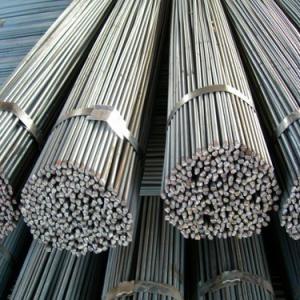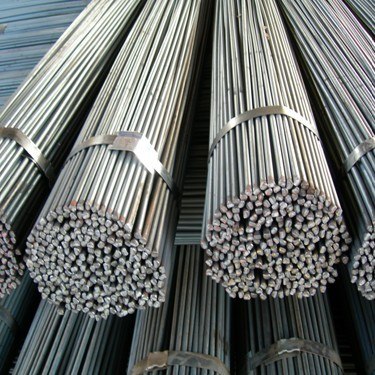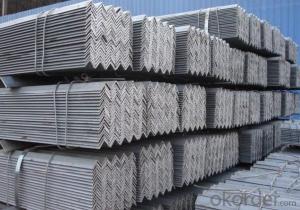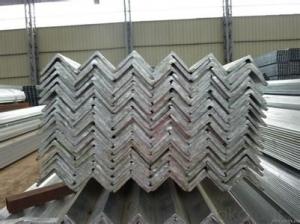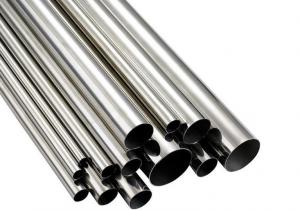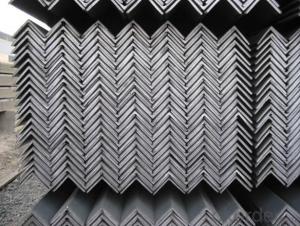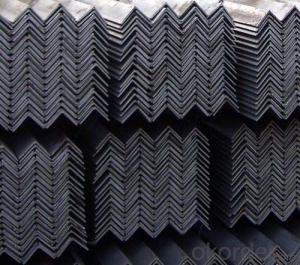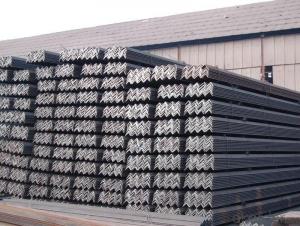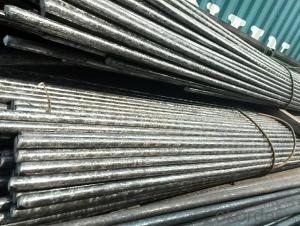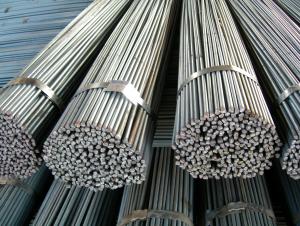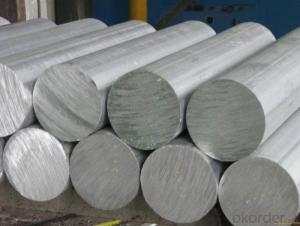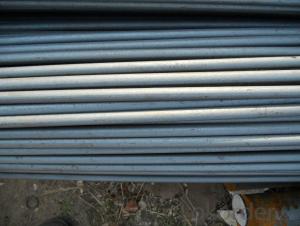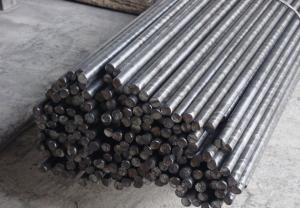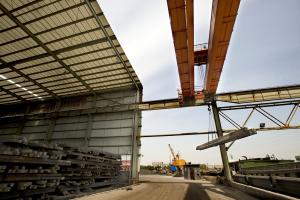Angle Steel or Galvanzied Angle Steel Hot Rolled High Quality 25-250MM
- Loading Port:
- China Main Port
- Payment Terms:
- TT or LC
- Min Order Qty:
- -
- Supply Capability:
- -
OKorder Service Pledge
OKorder Financial Service
You Might Also Like
Product Description:
OKorder is offering Angle Steel or Galvanzied Angle Steel Hot Rolled High Quality 25-250MM at great prices with worldwide shipping. Our supplier is a world-class manufacturer of steel, with our products utilized the world over. OKorder annually supplies products to European, North American and Asian markets. We provide quotations within 24 hours of receiving an inquiry and guarantee competitive prices.
Product Applications:
According to the needs of different structures, Angle can compose to different force support component, and also can be the connections between components. It is widely used in various building structures and engineering structures such as roof beams, bridges, transmission towers, hoisting machinery and transport machinery, ships, industrial furnaces, reaction tower, container frame and warehouse etc
Product Advantages:
OKorder's Angle Steel or Galvanzied Angle Steel Hot Rolled High Quality 25-250MM are durable, strong, and resist corrosion.
Main Product Features:
· Premium quality
· Prompt delivery & seaworthy packing (30 days after receiving deposit)
· Corrosion resistance
· Can be recycled and reused
· Mill test certification
· Professional Service
· Competitive pricing
Product Specifications:
Manufacture: Hot rolled
Grade: Q195 – 235
Certificates: ISO, SGS, BV, CIQ
Length: 6m – 12m, as per customer request
Packaging: Export packing, nude packing, bundled
Sizes: 25mm-250mm | ||||||||||||
a*t | ||||||||||||
25*2.5-4.0 | 70*6.0-9.0 | 130*9.0-15 | ||||||||||
30*2.5-6.6 | 75*6.0-9.0 | 140*10-14 | ||||||||||
36*3.0-5.0 | 80*5.0-10 | 150*10-20 | ||||||||||
38*2.3-6.0 | 90*7.0-10 | 160*10-16 | ||||||||||
40*3.0-5.0 | 100*6.0-12 | 175*12-15 | ||||||||||
45*4.0-6.0 | 110*8.0-10 | 180*12-18 | ||||||||||
50*4.0-6.0 | 120*6.0-15 | 200*14-25 | ||||||||||
60*4.0-8.0 | 125*8.0-14 | 250*25 | ||||||||||
FAQ:
Q1: Why buy Materials & Equipment from OKorder.com?
A1: All products offered byOKorder.com are carefully selected from China's most reliable manufacturing enterprises. Through its ISO certifications, OKorder.com adheres to the highest standards and a commitment to supply chain safety and customer satisfaction.
Q2: How do you package the angle steel when shipping?
A2: All goods are packed in bundles with steel strips and shipped by container or break bulk.
Q3: The products are invoicing on theoritical weight or on actual weight?
A3: We can do it in both manners, according to the customers' request.
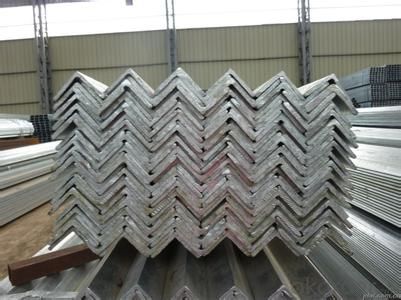
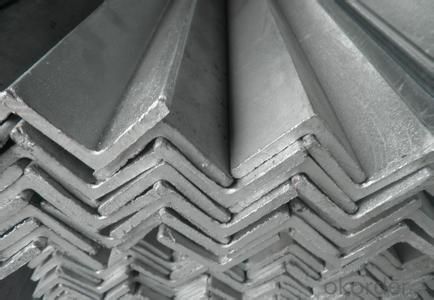
- Q: Can steel round bars be used for making pipelines?
- Yes, steel round bars can be used for making pipelines. Steel is a widely used material for pipelines due to its strength, durability, and resistance to corrosion. Round bars, which are cylindrical in shape, can be easily fabricated and welded together to form pipelines of various sizes and lengths. The steel round bars used for pipelines are typically made from carbon steel or alloy steel, which have high tensile strength and can withstand high pressure and temperature conditions. Additionally, steel round bars can be coated with protective layers such as epoxy or polyethylene to further enhance their resistance to corrosion. Overall, steel round bars provide a reliable and efficient option for constructing pipelines in various industries such as oil and gas, water supply, and construction.
- Q: What are the advantages of using free-cutting steel round bars?
- There are several advantages to using free-cutting steel round bars. Firstly, they offer improved machinability, which means they can be easily and efficiently machined into various shapes and sizes without excessive tool wear or power consumption. This leads to increased productivity and reduced manufacturing costs. Additionally, free-cutting steel round bars have excellent chip formation properties, resulting in better surface finish and dimensional accuracy of the machined parts. They also exhibit enhanced surface hardness and wear resistance, making them suitable for applications that require durability and strength. Lastly, these bars are readily available and cost-effective, making them a preferred choice for many industries.
- Q: How do steel round bars compare to cast iron bars?
- Considered to be stronger and more durable than cast iron bars are steel round bars. Steel possesses a higher tensile strength and can endure greater loads and stress without distorting or fracturing. Moreover, steel exhibits superior resistance to corrosion and possesses a higher melting point in comparison to cast iron. An additional benefit of steel round bars lies in their versatility. Steel can be easily machined, welded, and shaped into various forms, making it suitable for a wide array of applications. Conversely, cast iron is brittle and challenging to manipulate. It possesses limited malleability and is prone to cracking or chipping under stress. Nevertheless, cast iron bars possess their own distinct properties that render them appropriate for specific applications. Renowned for its exceptional heat retention and distribution, cast iron proves ideal for applications such as cookware and engine blocks. It also boasts commendable vibration damping properties, which can prove advantageous in certain industrial applications. In conclusion, while steel round bars are generally regarded as superior in terms of strength, durability, and versatility, cast iron bars possess unique advantages in select applications. Ultimately, the choice between the two will depend on the specific requirements and conditions of the intended use.
- Q: What are the different surface treatments available for steel round bars?
- Steel round bars can undergo a variety of surface treatments to enhance their properties and improve performance. Some common options include: 1. Hot-dip galvanizing: Immersing the bars in molten zinc forms a protective coating, offering excellent corrosion resistance suitable for outdoor or moist environments. 2. Electroplating: Applying a thin metal layer using an electric current can enhance corrosion resistance, appearance, or provide specific functional properties. 3. Powder coating: Heat-curing a dry powder paint creates a durable and decorative coating, offering corrosion resistance and a wide range of color options. 4. Black oxide coating: A chemical treatment creates a dark, matte finish, providing moderate corrosion resistance and enhancing appearance for decorative or non-reflective applications. 5. Chrome plating: Electroplating a thin chromium layer enhances corrosion and wear resistance, while also giving a shiny, reflective finish. 6. Nitriding: Heat treating the bars diffuses nitrogen into the surface, forming a hardened layer that improves hardness, wear resistance, and fatigue strength for high-strength and durable applications. 7. Anodizing: Although commonly used for aluminum, anodizing can also be applied to steel round bars. This electrolytic process creates a protective oxide layer, enhancing corrosion resistance and providing a durable and decorative finish. These examples represent only a fraction of the available surface treatments for steel round bars. The choice of treatment depends on the specific requirements of the application, such as corrosion resistance, wear resistance, appearance, or functional properties needed.
- Q: What are the advantages of using nickel-chromium-silicon alloy steel round bars?
- There are several advantages of using nickel-chromium-silicon alloy steel round bars. Firstly, this type of alloy steel offers excellent corrosion resistance, making it suitable for various applications in corrosive environments. Secondly, its high strength and toughness properties make it ideal for applications requiring heavy-duty and high-stress resistance. Additionally, nickel-chromium-silicon alloy steel round bars possess good high-temperature stability, allowing them to withstand elevated temperatures without significant deformation or loss of mechanical properties. Lastly, this alloy steel is known for its excellent weldability and machinability, enabling easy fabrication and customization according to specific requirements.
- Q: What are the different types of steel round bar surface treatments for improved hardness?
- There are several different types of steel round bar surface treatments that can be used to improve hardness. Some common treatments include case hardening, nitriding, and induction hardening. Case hardening involves adding carbon to the surface of the steel to create a hardened outer layer, while nitriding involves introducing nitrogen to form a hard nitride layer. Induction hardening uses heat to quickly heat and cool the surface of the steel, creating a hardened layer. These treatments can significantly enhance the hardness and wear resistance of steel round bars.
- Q: How are steel round bars tested for quality?
- Steel round bars are tested for quality through various methods to ensure that they meet the required standards and specifications. One common test is the visual inspection, which involves examining the bars for any visible defects such as surface cracks, pits, or deformities. This is done by highly skilled personnel who are trained to identify any irregularities that may affect the quality of the steel bars. Another important test is the dimensional inspection, which measures the diameter, length, and straightness of the round bars. This ensures that the bars are within the specified tolerances and that they meet the required dimensions for their intended use. Mechanical testing is also conducted to assess the strength and mechanical properties of the steel bars. This includes tests like tensile strength, yield strength, and elongation, which determine how the bars will perform under various loads and conditions. These tests are carried out using specialized equipment and provide valuable information about the structural integrity and quality of the steel bars. Furthermore, chemical composition analysis is performed to verify that the steel bars contain the correct proportions of different elements such as carbon, manganese, and alloying elements. This analysis is crucial as it determines the suitability of the bars for specific applications and ensures that they possess the desired characteristics. In addition to these tests, non-destructive testing methods such as ultrasonic testing, magnetic particle inspection, or dye penetrant testing may also be employed. These techniques can detect internal or surface defects that may not be visible to the naked eye and provide further assurance of the quality and integrity of the steel bars. Overall, a combination of visual inspection, dimensional inspection, mechanical testing, chemical composition analysis, and non-destructive testing methods is used to thoroughly assess the quality of steel round bars. These rigorous testing processes help to ensure that the bars meet the required standards and specifications, providing customers with high-quality and reliable steel products.
- Q: Can steel round bars be coated with protective coatings?
- Indeed, it is possible to apply protective coatings to steel round bars. These coatings function as a shield, safeguarding the steel against corrosion, abrasion, and other forms of harm. The most prevalent form of protective coating for steel round bars is known as a corrosion-resistant coating. It is typically administered using methods such as hot-dip galvanization, electroplating, or powder coating. These coatings establish a protective layer that prevents the steel from encountering corrosive substances, moisture, and other environmental elements that may lead to deterioration. Furthermore, these coatings have the potential to enhance the aesthetic appeal of the steel round bars and extend their lifespan.
- Q: What are the different types of steel round bar alloys used in the aerospace industry?
- There are several different types of steel round bar alloys that are commonly used in the aerospace industry. These alloys are specifically designed to meet the demanding requirements of the aerospace sector, including high strength, corrosion resistance, and lightweight properties. 1. Stainless Steel: Stainless steel is one of the most popular alloys used in aerospace applications. It offers excellent corrosion resistance, high strength, and good heat resistance. This alloy is commonly used in aircraft components such as landing gear, fasteners, and engine parts. 2. Titanium Alloy: Titanium alloys are widely used in the aerospace industry due to their high strength-to-weight ratio. They offer excellent corrosion resistance, good fatigue strength, and can withstand high temperatures. Titanium alloys are commonly used in aircraft frames, engine components, and landing gear. 3. Aluminum Alloy: Aluminum alloys are lightweight and have good mechanical properties, making them suitable for aerospace applications. They offer good corrosion resistance and are often used in aircraft structures, wings, and fuselage components. 4. Nickel Alloy: Nickel alloys are known for their high strength and excellent resistance to extreme temperatures. They are commonly used in aerospace applications where resistance to heat, wear, and corrosion is critical, such as in turbine engines and exhaust systems. 5. High-Strength Low-Alloy (HSLA) Steel: HSLA steels are known for their high strength and good weldability. They offer good toughness and impact resistance, making them suitable for aerospace applications where strength and durability are essential, such as in landing gear and structural components. Overall, the aerospace industry utilizes a combination of these steel round bar alloys to meet the specific requirements of different components and applications. Each alloy offers unique properties that make it suitable for specific aerospace applications, ensuring the safety, reliability, and performance of aircraft in the highly demanding aerospace environment.
- Q: How many tons of pressure can the round steel of 70 inches bear?
- If the steel will generally approximate compressive strength considering tensile strength, even if is only 4 tons / square centimeters, each round cross section of 26 mm diameter is 5.3 cm, maximum 5.3*4 about 20 tons of pressure, the actual use should take into account the safety factor;
Send your message to us
Angle Steel or Galvanzied Angle Steel Hot Rolled High Quality 25-250MM
- Loading Port:
- China Main Port
- Payment Terms:
- TT or LC
- Min Order Qty:
- -
- Supply Capability:
- -
OKorder Service Pledge
OKorder Financial Service
Similar products
Hot products
Hot Searches
Related keywords
